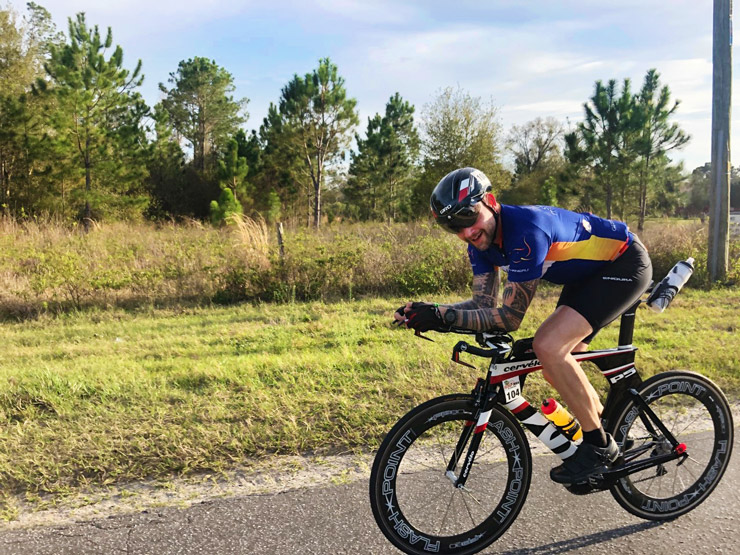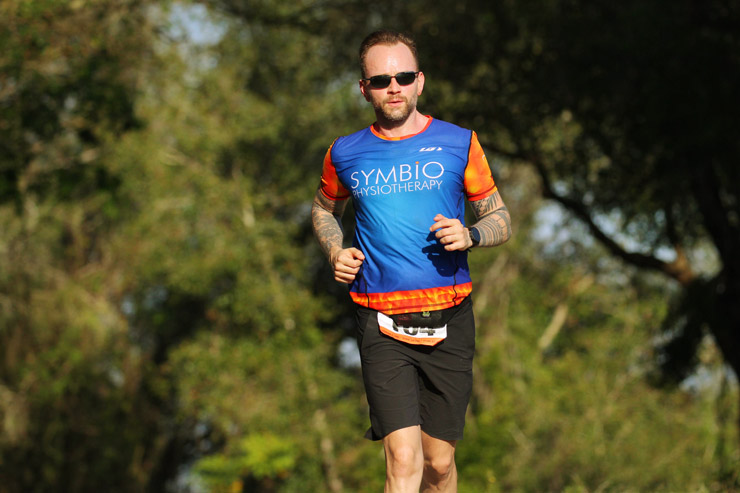
With an awareness of our bodies’ innate power to heal and a willingness to adapt, we can thrive in the face of physical and mental challenges
—
Dr. Chad Woodard, a former professional dancer and now physical therapist, understands the innate healing power of our bodies and our potential to thrive and achieve well beyond our self-limiting beliefs. In this Q&A, Chad discusses the injuries that ended his dance career, as well as his evolution into an elite endurance athlete, and the mindset and lifestyle choices that we can all adopt to live more fully.
I firmly believe that most of us go through our lives living below our highest level of potential as we often rationalize mediocrity and comfort
— Dr. Chad Woodard
Q: In the height of your professional dance career, you began to feel debilitating pain in your hip – yet your doctors could not find a cause, suggesting that ‘it was all in your head’. In your subsequent path in becoming a physical therapist, what did you come to learn about the source of the pain? Was it in your head? Or is there another path to healing that the conventional medical community doesn’t promote — or perhaps is simply not aware of? Or both?
I believe it is safe to say that some component of all pain is ‘in our heads’, as delineating the pain stimulus from the emotional component is nearly impossible. That being said, there was a physical cause for my symptoms that was being missed by the practitioners I saw. Without getting into the detailed neurology and physiology of my state at that time, I eventually traced the injury back to a very old ankle sprain I sustained as a child that was never rehabilitated. This subsequently changed how my body moved, and didn’t move, in subtle yet significant ways. The result was a body out of balance that couldn’t move efficiently. Becoming a Physical Therapist (PT) was my journey to understand that, and one of the major factors that continues to motivate me as a mentor and professor at Touro College today.
Q: It must have been devastating to think of being forced to surrender your career to this physical ailment. How did you summon the courage to press on and not just accept it?
To be honest, I stayed in the field for longer than I perhaps should have because I didn’t know what else to do with myself. This is common for dancers, but also for many movers. There comes a time when the demands of the profession start seeming insurmountable, but the person keeps at it because they feel it is their only option or their love for the sport mandates their attention. I held on as long as I could, but eventually faced the reality that musical theatre was not a great long-term option for my career. I don’t regret a day of that time spent as it was a learning lesson for me. However, I do celebrate the decision I made to transition to a field I am now in love with.
Q: You now are an elite endurance athlete, competing in ultra-marathons and triathlons. Were you always this driven, or did your victory over your setback inspire you to greater achievement?
I’ve always been rather stubborn, taking pride in making sacrifices and devoting attention to what was needed for any task. Did my setback as a performer influence my love for running? I’m sure it did in some way. The death of one love is often the birth of another, if we remain open to seeing that potential.
But as far as drive and dedication, I firmly believe that most of us go through our lives living below our highest level of potential as we often rationalize mediocrity and comfort, telling ourselves that we are doing our best. In most cases, and perhaps acknowledging my own intensity and bias, I think that is a lie we tell ourselves and then choose to believe it. Pushing myself to the limit in these endurance events is a poignant reminder of what I am capable of achieving, both as an athlete, but more importantly as a human. If I am capable, so is everyone else.
Q: Please explain traumatophobia, how that impacts the lives of people on a large scale and small, and how readers can identify and overcome this pattern in their own lives.
We are hard-wired for one main thing — survival. Any stimulus that is interpreted by our nervous system to be a threat will then be avoided at all costs. It’s a beautiful mechanism to protect ourselves against injury and harm. If a rattlesnake bites you while walking in the desert, your brain will form an association to a very bad thing happening when walking in the desert. Next time you go for a walk, I bet a good amount of your brain capacity will be spent being nervous and cautious, even fearful.
The same thing happens, perhaps on a smaller scale, for people who have experienced trauma or injury during a sport. A runner who has a history of injury and pain caused by running might form that same ‘rattlesnake’ association. “Running has caused harm to my body before, how can I know it won’t do it again?”
Fear avoidance behavior is a common finding in my field, and something I am sympathetic to. Traumatophobia is translated to a significant fear of repeating the same trauma. This can be debilitating for athletes, but truly for anyone in any setting. Any type of trauma can, depending on multiple variables, become something a person can grow to fear including automobile accidents, physical trauma, relationship trauma, a slip and fall at work, and so on. We are designed to stay alive and any true or perceived threat to that design will be interpreted by our nervous system as something to be avoided. The trick is knowing when, and how, to override that signal.
Q: Lastly, what is your view on the power that we all innately possess to heal ourselves, and what mental and physical framework and practices will best set us up for longevity and our highest state of wellbeing?
Millennia of human evolution and development lend credit to our innate ability to heal and thrive. Something in our coding and design has made human beings quite capable of healing. Otherwise, we wouldn’t have even been a blip on the evolutionary timeline, fading long ago into extinction and oblivion. What I notice currently in my patient population, and even within myself, is that we have ‘forgotten’ that ability and have come to rely on an external source or person to do the healing for us. This is not to say we don’t need help, but my argument is that my patient’s bodies and nervous systems are far superior in their ability to heal than I ever will be. My job for them, and again for myself, is to gently guide them in the right direction.
The most powerful tools to lead that charge are lifestyle factors. I hope to never neglect my genuine astonishment for what can happen to a person who chooses to adopt a healthier lifestyle.
Moderation of exercise, nutrition, stress management, community integration and social support are the medicines of the future. I say that confidently because they have been the medicines of the past, the very distant past indeed. The answer lies in what we have already become experts at as a species, tested through thousands if not millions of years. That answer is a lifestyle fitting for our genetic design. True healing and wellness reside here, waiting for us to remember.

Dr. Chad Woodard, PT, DPT, ABD, OCS, CSCS, is an Assistant Professor of Physical Therapy and the Director of Clinical Education in the Doctor of Physical Therapy Program at Touro College School of Health Sciences in Manhattan.
You may also enjoy reading 10 Simple Rules for Living a Healthy Life, by Tom Buckland